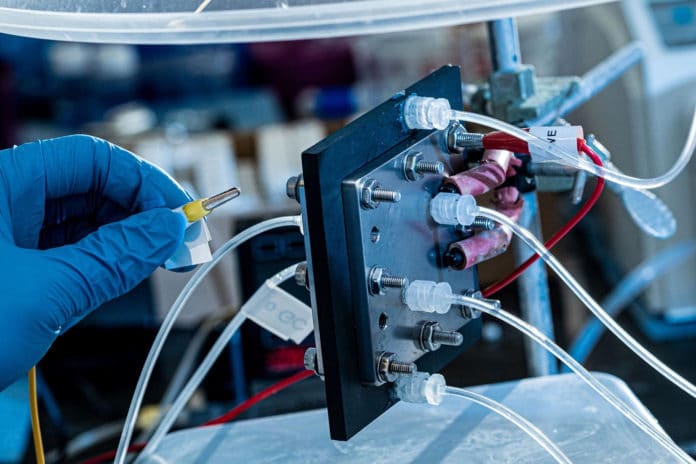In last few years, we have seen a number of ways to reduce the amount of greenhouse gases in our environment.
Now, Rice University researchers have found an efficient and environmentally friendly way to turn a common greenhouse gas into pure liquid fuels. They have developed a device that uses an electrocatalysis reactor to transform the carbon dioxide into liquid fuel in the form of purified concentrations of formic acid. Formic acid is an important chemical reagent that is also found in bee and ant venom (a poisonous substance secreted by animals).
Most current methods for producing formic acid is expensive and requires a lot of energy. On the contrary, the new concept shows how greenhouse gases could be turned into new fuel sources in a cost-effective and energy-efficient manner.
Formic acids can be used in a number of ways. This colorless liquid has a pungent, penetrating odor at room temperature and has antibacterial qualities. That’s why it can be used as a preservative and antibacterial agent in livestock feed. It’s a fuel-cell fuel that, when burned, can generate electricity and emit carbon dioxide – which you can grab and recycle again.

To better develop the technology, the Rice University team uses a two-dimensional bismuth catalyst and a solid-state electrolyte which eliminates the need for salt as part of the reaction. Typically, salt – in the form of sodium chloride or potassium bicarbonate – is usually required to allow ions to move freely in water as part of the conversion process. However, Bismuth is a very heavy atom, compared to transition metals like copper, iron or cobalt. Besides, this type of catalyst can be reproduced at a much larger scale.
When tested, the electrocatalysis reactor was able to successfully generate formic acid continuously for 100 hours with negligible degradation of the reactor’s components, according to the team. How water is pumped through the reactor determines how concentrated the formic acid solution will be.
The 100 hours successful testing suggests that it would be possible to scale up the process to make it more useful for industrial purposes. The team also hopes that the reactor could be easily retooled to produce other useful products like ethanol and acetic acid.
